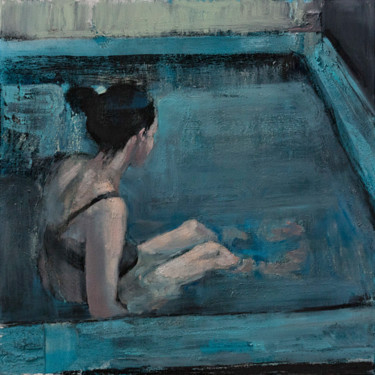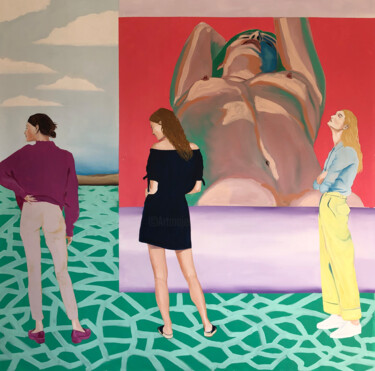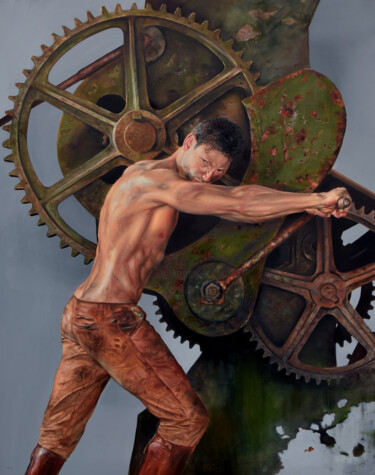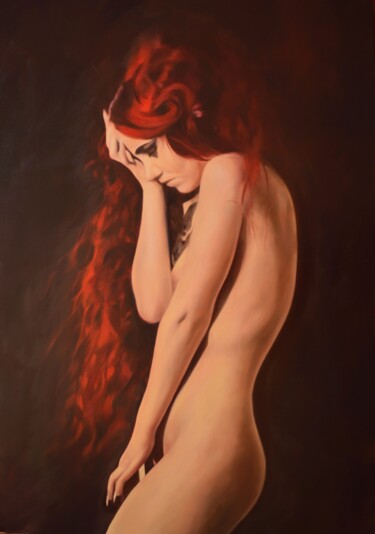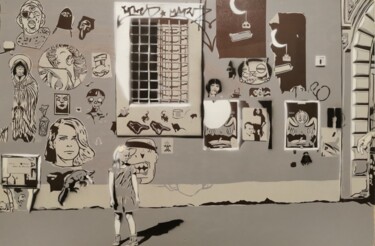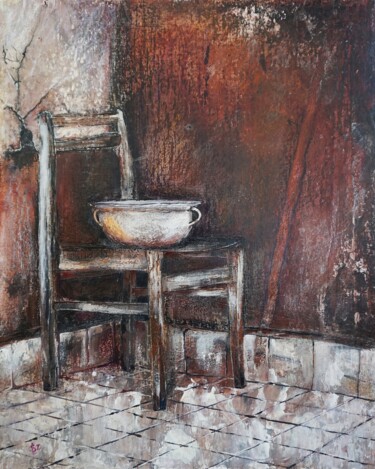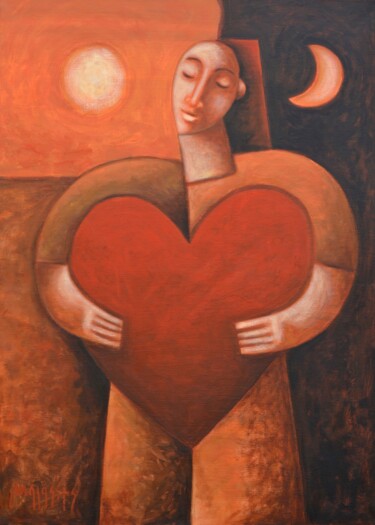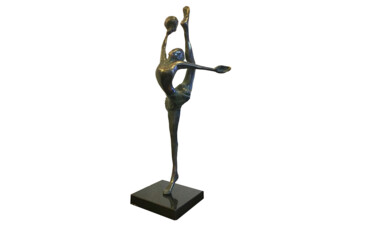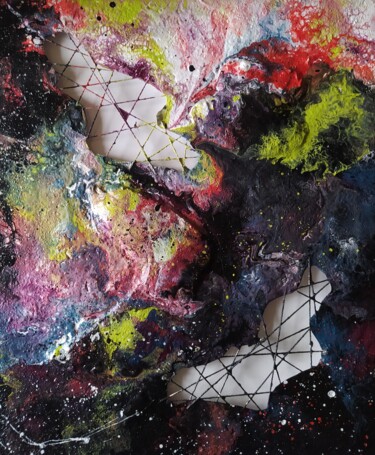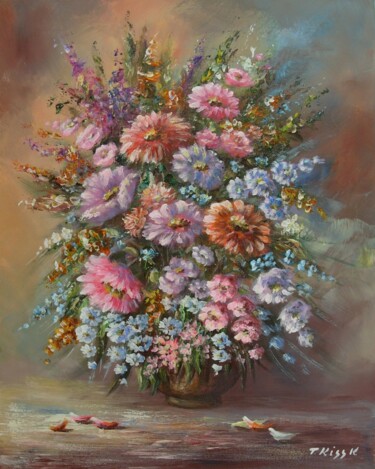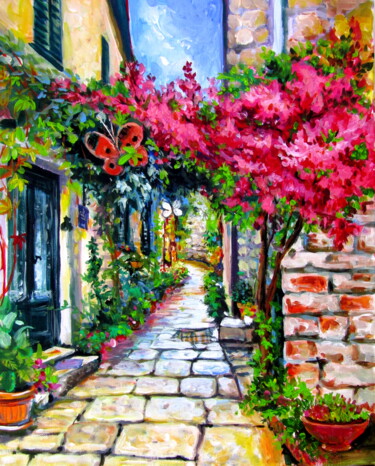Hungarian Art: Introduction in 5 Points
Roots: Most historians believe that the Hungarian people emerged around 895 AD under the leadership of Prince Árpád, a time when their earliest forms of artistic expression also developed. In the period following Árpád's conquest, the use of ornamental motifs became widespread, used to decorate both clothing and horse equipment, featuring the prominent theme of the palmette. What was described remained popular until the 11th century.
From Romanesque to Gothic: The art of the medieval Hungarian Kingdom takes the form of an interweaving of cultures, which followed one another in the millennial state of the Carpathian Basin. This results in a mixture of the original steppe styles and contemporary European Romanesque art. This encounter generated an architectural style particularly reminiscent of Scandinavian Viking and Celtic art. As for Gothic, it arrived in Hungary in the late 14th century, influencing architecture, painting, and sculpture. In painting, frescoes depicting the legend of Saint Ladislaus were very popular during this time, dedicated to the eponymous king and found in many churches.
Renaissance: Italian influence becomes quite evident in the arts. This is due to the strong connection that King Matthias Corvinus of Hungary established with the Italian Peninsula during his reign.
Baroque, Neoclassicism, and Secessionism: Most of the buildings we can admire in Hungary today are in the Baroque style, which gained prominence in the country after the expulsion of the Ottomans in 1686. Examples of neoclassical buildings are a result of a revival of ancient Greek traditions following the Age of Reforms. The triumph of the popularity of the subsequent secessionist style is evidenced by architectures like that of the Museum of Applied Arts (Ferencváros, Hungary), designed by one of the greatest architects of the time, Ödön Lechner.
 HOT TUB NO2Painting by Tibor Simon-Mazula
HOT TUB NO2Painting by Tibor Simon-Mazula
 SHADOW PLAY III. (2023)Painting by László Barna
SHADOW PLAY III. (2023)Painting by László Barna
The 20th Century
The introduction to the world of Hungarian art has allowed us to arrive where we wanted to be: the 20th century, the Avant-garde, and its most famous artists. In this specific context, Hungarian masters proved to be particularly active and receptive to all artistic innovations coming mainly from Western Europe at that time. During this period, Hungarian artists distinguished themselves, including fauvist painters such as Béla Czóbel, Dezső Czigány, Bertalan Pór, as well as avant-garde artists like Gyula Tornai, Gyula Benczúr, and Sándor Bihari. Later, during the socialist era, there was a more experimental, critical, and provocative artistic production, aligning with a Western activist faction of a tempered nature. Finally, the collapse of the regime led to newfound freedom and openness to Western art. Now, it's time to introduce, in ascending chronological order based on their birth dates, some of the most influential Hungarian artists of the 20th century!
 HARD WORK (2024)Painting by Peter Duhaj
HARD WORK (2024)Painting by Peter Duhaj
André Kertész
Who revolutionized photographic composition and the photographic essay with pioneering contributions of a lyrical, elegant, and rigorous nature? André Kertész! The Hungarian photographer born in 1894, however, did not immediately find the recognition he deserved because initially, his unconventional angles and more spontaneous style, rather than technical precision, were not well understood. Nevertheless, he is now considered one of the fundamental figures of 20th-century photography, as exemplified by his work "Fork" (1918). This subject aims to juxtapose the beautiful with the simple, concepts illuminated in their everyday essence, and highlighted by the presence of dramatic shadows placed beneath the fork. This creates almost the impression of an abstract composition, even though the nature of the utensil is explicitly shown. What can we deduce from this? Certainly, the power of the photographic medium, capable of transforming a simple tool into an object with great poetic potential.
László Moholy-Nagy
László Moholy-Nagy (1895 – 1946) was a Hungarian painter and photographer, as well as a professor at the Bauhaus school. This modernist master was influenced by Dadaism, Constructivism, Suprematism, and the debates on photography, which gave him a more practical, experimental, and technological approach. Speaking of one of his paintings, we can refer to the famous "Konstruktion in Emaille 1" (Construction in Enamel 1, also known as Telephone Painting) (1922-23), an abstract geometric composition that takes shape in the form of a thick black vertical bar against a white background. What has just been described is accompanied by the presence of a small horizontal yellow rectangle, surrounded by red, appearing behind a red vertical line. Additionally, a similar cross-shaped figure is placed in the upper right corner of the canvas, creating depth in the composition. While these smaller components of the masterpiece seem to progressively approach the viewer, the larger forms remain static, alluding to the more typical minimalist order. Finally, the work, due to its characteristics, shows affinities with both Constructivism and the contemporary Dutch De Stijl movement.
 BALLET 2. (2020)Sculpture by Kristof Toth
BALLET 2. (2020)Sculpture by Kristof Toth
Brassaï
Brassaï (1899 – 1984), a Hungarian-French photographer, sculptor, medalist, writer, and filmmaker, achieved international fame in 20th-century France. What made him famous was his photographic exploration of Parisian nightlife, compiled in the book "Paris by Night." However, as a photographer and photojournalist, he primarily contributed to the realm of vernacular photography, although his work often straddles the line between street photography and surrealistic art. To represent his subjects, primarily seen as the result of his curiosity about the urbanization phenomena of the time, I refer to the following photograph: "The stream snaking down the empty street" (1930-32). This photograph highlights the photographer's interest in the subject of the street, illuminated by electric light, ready to reveal the pavement in all its details. Following these interests, cities at night are immortalized through two basic principles: systematic discipline of the shot and a poetic vision and sensibility. In fact, his photographs were described by Christian Bouqueret as: Brassaï is the photographer "of a new world," "where night is no longer night and where light bursts in brutally and noisily [...] making visible things that were previously only speculations."
Marcel Breuer
Marcel Lajos Breuer (1902 - 1981) was a Hungarian-German modernist architect and furniture designer, whose career spanned every aspect of three-dimensional design, from objects to buildings. In particular, he, a student and later a teacher at the Bauhaus, is best known for his iconic chair designs, where his keen interest in testing the latest technological advancements to break with conventions and achieve remarkable results was evident. Regarding his Club chair (model B3) (1927-28), made of leather and tubular steel, it is nothing short of iconic, even though it was created during the period when the artist was still an apprentice at the Bauhaus. Stylistically, the chair is inspired by the Constructivist principles of the De Stijl movement and reinterprets the idea of a bicycle frame in an essential way, adhering to the principles of functionality and simplicity.
 LÁNY FÁCÁNNAL (2022)Painting by Attila Karácsony
LÁNY FÁCÁNNAL (2022)Painting by Attila Karácsony
Victor Vasarely
Victor Vasarely (1906 – 1997), the "grandfather" and leader of the Op art movement, was a Hungarian-French artist widely known for his works featuring optical-geometric effects achieved through a combination of virtuosic technical precision and renowned scientific awareness. In fact, his art aims to play with the viewer's visual sense by creating illusory effects and multiple depths, perspectives, and movements. The most important aspect becomes the act of looking, comparing what we actually see with what is truly present. In "Zebra" (1937), the two depicted animals intertwine against a black background, giving the composition depth along with intimacy, energy, and sensuality. The overall sense of movement is enhanced by the fact that the animals lack contours but are defined by undulating black and white stripes, making everything appear in constant motion. In this use of optical effects, "Zebra" has often been considered one of the early works of Op Art.
Robert Capa
Robert Capa, a Hungarian-American war photographer and photojournalist born in 1913, often used a small camera to get close to dangerous action areas in order to depict the devastating effects of violence. Additionally, his war photographs, created to tell stories and capture the essence of subjects, are known for their pathos. He remains a role model for those who engage in this branch of photography to this day. One of Capa's most iconic shots is undoubtedly "The Falling Soldier" (1936), a work that captures a soldier just hit by a fatal shot, falling backward in a desolate field, gradually letting go of his rifle as well. The photograph truly captures what Henri Cartier-Bresson called the "decisive moment," in which one perceives both the movement of the fall and the stillness of death. Finally, the dramatic composition of the photograph, now widely regarded as the most famous war photograph ever taken, recalls the outstretched arms of the soldier, reminiscent of Francisco Goya's "The Third of May 1808" (1814).
 SZENVEDÉLY (2023)Painting by Rékai Zsolt
SZENVEDÉLY (2023)Painting by Rékai Zsolt
Simon Hantaï
Simon Hantaï (1922 – 2008) was a Hungarian-born, naturalized French painter, generally associated with abstract art. His works, including the "pliage" paintings, are the result of a fusion of Surrealist automatism and Abstract Expressionist gestures. This particular artistic creation method characterized most of his career and took various forms. Regarding the technique in question: in "pliage," the canvas is folded into various shapes, then painted and unfolded, revealing parts of the support devoid of color. As an example of his work, "Untitled [Suite 'Blancs']" (1973) was created using the "pliage" method, in this case knotting parts of the unstretched canvas, applying paint, and then releasing the support.
Dóra Maurer
Dóra Maurer is a Hungarian visual artist born in 1937, known for expressing herself through nearly every medium of art, including photography, cinema, painting, performance, and sculpture. She experiments with a contemporary and modernist language that takes shape through mathematical processes and complex systems, aiming to offer different options to the viewer, who must decide how to respond and act independently. In any case, the artist's work often involves breaking down simple actions, allowing the audience to contemplate the components of movement. Describing a specific work, "Hétpróba" (Seven Trials) is an intimate portrait of the singer and mother Póka Eszter and her four teenage children. Maurer's off-screen voice accompanies each family member as they are prompted to respond to a series of fun challenges, revealing private and painful thoughts. This narrative is almost de-dramatized by Maurer's cinematic strategies, through which characters are dissected, repeated, reformatted, paused, and distorted, to make us focus more on their connections and differences.


 Olimpia Gaia Martinelli
Olimpia Gaia Martinelli
